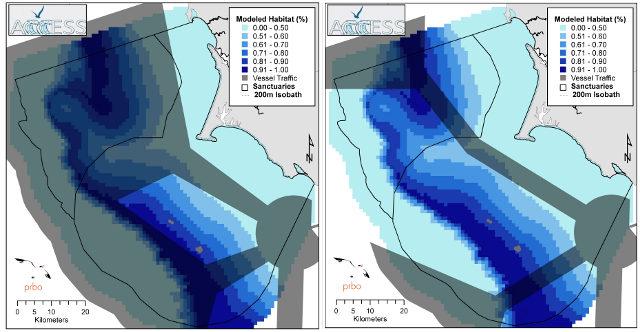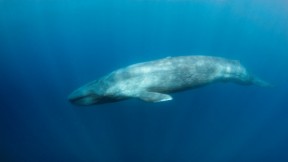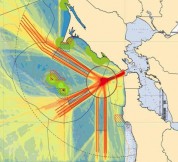
Cargo ships coming into San Francisco Bay must now follow new, narrower shipping lanes as they approach the Golden Gate. The change is designed to protect whales off the coast, as increasing numbers have been struck and killed by large ships.
“The problem is getting worse and that’s to be expected,” said John Calambokidis, a biologist with the Cascadia Research Collective who has tracked whale strikes. “The ships are getting larger, more numerous and faster.”
According to federal scientists, at least 20 whales have been killed and 10 whales have been injured or possibly killed off the California coast since 1988. But many believe most whale strikes go undetected.

“Most ships that come in with a whale wrapped around their bow are often unaware of it,” said Calambokidis. “We suspect many of these strikes are unknown to these larger ships, with most of the whales not being discovered or sinking.”
The cold waters outside of San Francisco Bay provide a rich feeding ground for humpback and blue whales. Gray whales are often seen close to shore as they migrate through in the winter and spring. “We’re particularly concerned about blue whales not only because of the number of ship strikes, but also because blue whales have not been showing recovery off the West Coast,” Calambokidis said.
